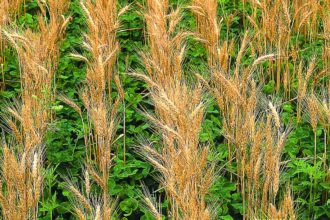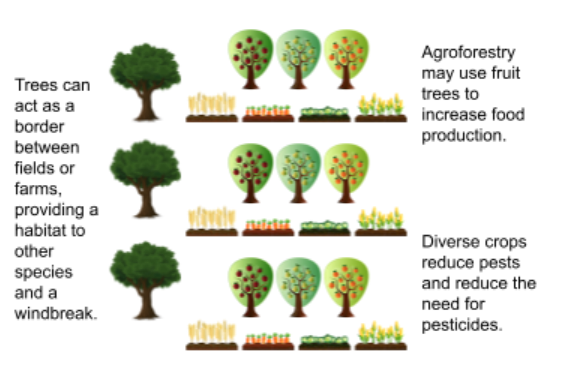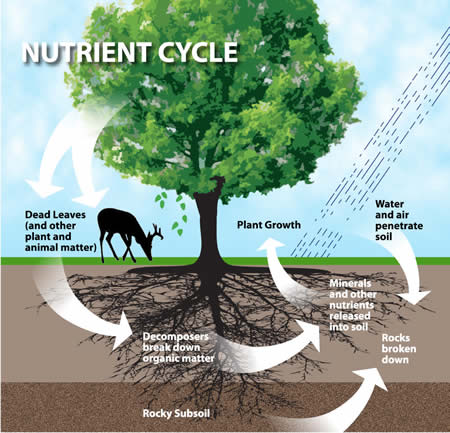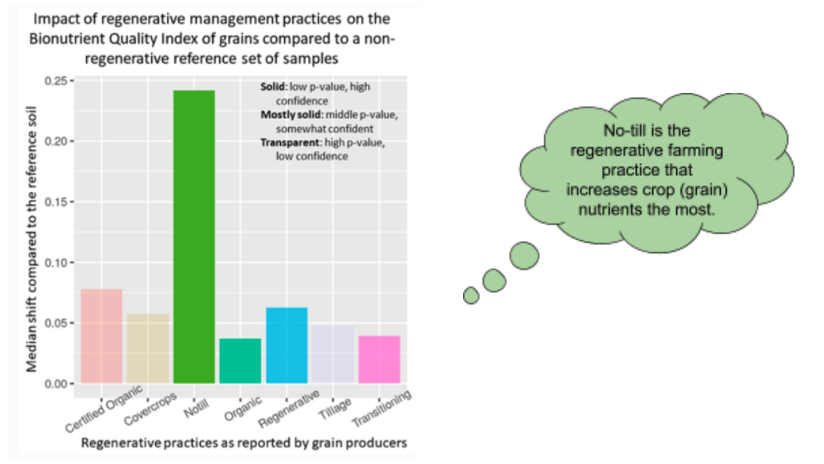This guide was developed to help provide an overview of regenerative agriculture (RA). We provide context and background information to help you understand what RA is, what agricultural practices are involved, and how RA works to fight climate change and sustain food production.
See the table of contents below for quick navigation.

What Is Regenerative Agriculture?
What is the Purpose of Regenerative Agriculture? Outcome Goals
Regenerative Practices: How RA Differs From Conventional Farming
Effectiveness of Regenerative Agriculture
Critiques and Challenges of Regenerative Agriculture
Regenerative Agriculture In Action
Regenerative Agriculture Certifications
Regenerative agriculture (RA), broadly defined, is the practice of any agricultural activity, such as farming or ranching, that improves the environment at the same time as producing food or other farming products.
There is no agreed-upon definition of regenerative agriculture. However, the most fundamental principle, as indicated by the term “regenerative”, is that it improves the resources it uses, rather than destroying or depleting them. In this sense, RA seeks to go beyond being merely “sustainable” agriculture, or agriculture that has a net neutral environmental impact, and move instead towards a net positive environmental impact.

While definitions of regenerative agriculture vary, most definitions are based on one or both of the following:
The desired or expected outcomes of regenerative agriculture can be separated into two categories: big picture goals and incremental goals. RA practices work to achieve these outcomes. (Note that these are goals, and the effectiveness of RA at achieving some of these goals has been challenged.)
Big picture goals are goals that require many steps and different activities working together. The big picture goals of RA are:
Reversing Climate Change
The Problem: Climate change is caused by greenhouse gases like carbon dioxide building up in the atmosphere, causing overheating. Agriculture (and associated land-use change such as deforestation) accounts for nearly one-fourth of greenhouse gas (GHG) emissions (Searchinger et al. 2019).
RA’s Solution: Healthy soils absorb more carbon dioxide, allowing for greater carbon sequestration in the soil, and pulling more CO2 from the atmosphere. Additionally, RA aims to use land more efficiently, allowing for less land-use and deforestation devoted to agriculture, and more land with trees, plants and soil that efficiently sequesters carbon.

Plants absorb carbon dioxide through photosynthesis, and return some of it to the air. The rest of the carbon remains in the plant, and can be “stored” in soil when the plant dies and decomposes.
Increasing Food Production While Decreasing Environmental Impact
The Problem: Global demand for food is high, and is expected to keep growing at least through 2050, both overall and on a per-capita basis (Bodirsky et al. 2020). However, agriculture already takes up one-third of global land use, and increasing food supply is difficult. In fact, the UN predicts that, unless we can improve our degraded soil, we will only be able to effectively continue farming for 60 years (although this prediction is disputed).
RA’s Solution: Increasing soil health and fertility through RA practices can help increase food production. Additionally, RA aims to produce more nutrient dense foods that also have natural pest-protection.
Reversing Biodiversity Loss
The Problem: Biodiversity refers to the variety of organisms living on Earth. In addition to being intrinsically valuable, biodiverse ecosystems provide crucial services that support human life, such as pollination, water purification, and control of agricultural pests. Agriculture is the single largest contributor to biodiversity loss (Dudley & Alexander 2017).
RA’s Solution: RA practices that work to increase biodiversity include planting diverse crops, rotational grazing (giving land resting time between being grazed), and growing trees around or among the crops (agroforestry). With these practices, agricultural land will begin to look more like natural lands, which provides habitats and resources for a wider array of organisms. Microbe biodiversity will also be increased through RA by using fewer pesticides.
Incremental goals are shorter term outcomes that will incrementally help achieve big picture goals. That is not to say, however, that incremental goals are simple. Incremental goals include:
Improving soil health: Improving soil health is one of the main goals of regenerative agriculture. Healthy soil sequesters more carbon, helps increase food production, increases nutrient cycling, reduces erosion, increases water filtration, and increases microbe biodiversity.
Improving ecosystem health: Healthy ecosystems are biodiverse and nutrient-rich. RA aims to improve ecosystem health both for the sake of the planet and wildlife, but also to help human food production.
Increasing carbon sequestration: Increasing carbon sequestration through healthy soil and diverse crops will help fight climate change.
Improving water health: RA practices such as using natural pest control and natural fertilizers contribute to water health, as these reduce the amount of toxic runoff into water systems. RA also helps fight climate change through improved water health, as less pesticide runoff reduces acidification of water, which in turn allows for water to sequester more carbon.
Newton et al. 2020 reviewed data from 229 journal articles and 25 practitioner organizations to summarize the various definitions of RA. See their full list of regenerative agriculture outcomes.
There are a wide variety of practices that can be grouped under the umbrella of regenerative agriculture. Regenerative agriculture includes the following practices.
Conventional farming practices soil tilling, the process of mechanically overturning soil to break it up, intended to prepare soil for planting. Low-till or no-till farming is a farming technique to grow crops that uses the least amount of mechanical disturbance possible. Rather than plowing, farmers drill seeds into the ground.
No-till farming has been a principle common to conservation agriculture since the 1970s, and is a key principle of regenerative agriculture. No-till farming:
Part of no-till farming is keeping plant roots in soil as long as possible. Roots help feed beneficial soil microbes, which in turn work to protect and feed crops. When a plant dies, microbes in the soil eat it, which converts the roots back into nutrients, and soil carbon and soil structure are improved. Living roots also help protect against erosion or topsoil blowing away.
Cover crops are other plants grown in between “cash crops” (crops grown to be sold or consumed). Cover crops have a multitude of benefits, including:

These benefits increase soil health and crop yields, helping to address food insecurity. Additionally, cover crops increase water health by reducing the need for polluting agents like pesticides and fertilizers.
As industrial agriculture has grown, the variety of crops grown has lessened, and has led us to what some refer to as a “seed extinction.” In fact, the vast majority of seed species have gone extinct (Humphreys et al. 2019).
This is due to a dependence on monocultures, or the growth of a single crop type in a single area, rather than a diversity of crops. Monocultures have a negative effect on soil health and crop yields, increase pest problems, and reduce global food security.
Planting diverse crops has a number of benefits, including:
Rotating the type of crops planted over time or seasons also fights against the negative impacts of monocultures. Crop rotation promotes healthy soil and water infiltration, allowing for healthier, more resilient plants overall. Crop rotation also fights against pest cycles, as different pests are attracted to different plants; yearly or seasonal rotation does not allow specific pests time to multiply.
Reduced pests and disease, in addition to increased soil health, helps create healthier, more resilient crops. Not only can healthy plants help increase food production, but they can also help sequester carbon through photosynthesis.
Planting trees or bushes among crops is known as agroforestry. Some researchers believe that among all practices linked to regenerative agriculture, agroforestry is the most promising for fighting climate change (Giller et al. 2021).
Agroforestry allows for:
Additionally, trees can provide other goods such as timber, poles, fruits and nuts, and wood for fires.

By removing carbon dioxide from the atmosphere, trees and other plants help stop high carbon levels from trapping heat, and thus help reverse climate change.
The way in which agroforestry is conducted, as well as how effective it is, depends on where it is put into practice. For example, carbon sequestration rates tend to be higher in tropical climates (Feliciano et al. 2018).
Adding livestock to crop areas helps introduce natural biological processes to agriculture. Integration of livestock and crops can close the nutrient cycle; livestock like cattle deposit manure on the soil, which provides nutrients to the plants. In turn, livestock eat the plants.

Not only does this have environmental benefits, but it can also provide economic benefits to farmers, who no longer need to spend money hauling manure to their fields.
When integrating livestock, it’s important to manage grazing to avoid overgrazing. One strategy, referred to as rotational grazing, is to move cattle or other livestock around frequently. In rotational grazing, grazing animals are rotated and only allowed to graze in one portion of the pasture while the other sections “rest”.

Rotational grazing increases pasture yields, as plants and soil have more time to recuperate between grazing. This has the added benefit of providing high quality forage for the livestock.
Generally, well-managed grazing practices stimulate:
Use Natural Fertilizers and Pest-Control Methods
Pesticides have extremely negative effects on the health of soil, water, wildlife, pollinators and even humans.
Although pesticides are designed to protect crops, pesticides can actually end up harming crops in the long term. For example, most insects are beneficial, and many pesticides kill off insects indiscriminately. This may include crucial pollinators.
A 2014 study argues that it is possible to reduce pesticide use by 50 percent or greater without harming crop yields (Pimental & Burgess 2014).
Use of natural pesticides reverses biodiversity loss and improves water and soil health.
Use of natural fertilizers, substances that are produced by the earth or a living thing, can help close natural biological cycles (for example, livestock manure as a fertilizer, described above).
Natural fertilizers also improve water health, as fertilizer can runoff into water, causing pollution. Fertilizer runoff also reduces the ability of water to absorb carbon, reducing the effectiveness of a crucial carbon sink.
Researchers have performed several studies to test the effectiveness of regenerative agricultural practices. RA has been found to increase soil health, crop yields and farming profits. However, more research is needed to confirm RA’s goal of increasing carbon sequestration.
It is also difficult to make generalizing claims about RA’s effectiveness, as its effectiveness is highly dependent on where agriculture is taking place.
Regenerative agriculture leads to increased nutrient density. The Bionutrient Institute found that grains from producers utilizing regenerative agriculture practices had increased nutrient density compared to those that did not (The Bionutrient Institute 2021).

Low pesticide use does not lead to reduction in crop yields. Both Sweden and Indonesia implemented a reduction in pesticide use. In Sweden, a 61 percent reduction in pesticide use did not reduce crop yields. In Indonesia, a 65 percent reduction in pesticide use actually resulted in a 12 percent increase in rice yield (Pimentel & Burgess 2014).
Insecticide-free regenerative farms have fewer pests, which can help increase yield. Biodiversity and a complex ecosystem resulting from regenerative agricultural practices help increase crops’ resiliency against pests. A 2018 study found that pests were 10-fold more abundant in corn fields that used insecticide than in fields that did not (LaCanne et al. 2018).
Even if RA fields have lower crop yields, profits may still be higher. The same 2018 study found that RA fields had 29 percent lower grain production but 78 percent higher profits when compared to conventional corn farming. This was due to improved soil organic matter, less cost for inputs (insecticides and fertilizers), and different marketing of the products (LaCanne et al. 2018).
RA may increase soil carbon levels. A 2015 study found that on farms who had implemented some regenerative farming practices, soil carbon levels increased within a decade. The soil carbon levels began to look more similar to natural forest soils (Machmuller et al. 2015). The Bionutrient Institute also argues that no-till farming increased soil carbon sequestration (The Bionutrient Institute 2021).
Agroforestry can act as a carbon sink to fight climate change. Several papers calculate the amount of carbon that tree growth among crops would absorb, showing that agroforestry has a lot of potential to act as a climate sink. A 2016 paper argues that agroforestry is an extremely valuable tool to absorb carbon from the atmosphere and mitigate climate change (Zomer at al. 2016).
Additionally, grazing practices that increase the amount of grass growing also increase the field’s ability to store carbon (McCarthy et al. 2011).
While RA has shown extremely promising results, there are several challenges and critiques associated with RA.
Most critiques of RA are skeptical of the claim that it can help reverse climate change. There is much scientific debate over whether RA practices like no-till actually increase soil carbon sequestration (Powlson et al. 2014). If soil carbon does not actually increase with RA practices, then RA is unlikely to be as useful a tool to fight climate change as some say it is.
Generally, critics believe that there is too little information about soil carbon sequestration. The World Resources Institute argues that while RA does increase soil health, the process and impacts of soil carbon sequestration are unclear (including how and if it really works, the trade offs that can potentially increase GHG emissions, the absence of enough nitrogen for soil sequestration to occur, and the challenges of upscaling).
Challenges associated with studying and implementing RA include:
Despite the uncertainty surrounding some of RA’s claims, there have been many success stories from farms, ranches, and even personal gardens.
RA practices have been implemented successfully on farms and ranches around the world, including in Brazil, Senegal, the UK and Australia.
Examples of RA in action range from small farms to large-scale food production.
Several major food producers are also pushing RA forward. General Mills, a major global food producer, has begun pilot programs for farmers, who are provided practical tools for implementing regenerative agriculture, customized implementation plans, soil health testing, farmer networking communities, and biodiversity and economic assessments to demonstrate impact on outcomes over time.
There are several certifications farms and other agricultural institutions can achieve to show their commitment to RA practices. These help show buyers that their products have a lower ecological impact than conventional farms.
The Regenerative Organic Certified program is outcome oriented (increased soil organic matter, improved animal welfare, enhanced economic stability and fairness). However, farms are assessed mainly on whether or not they institute regenerative practices.
The Savory Institute’s Ecological Outcome Verified program requires demonstration of improved outcomes to maintain certification (e.g., soil health and biodiversity).